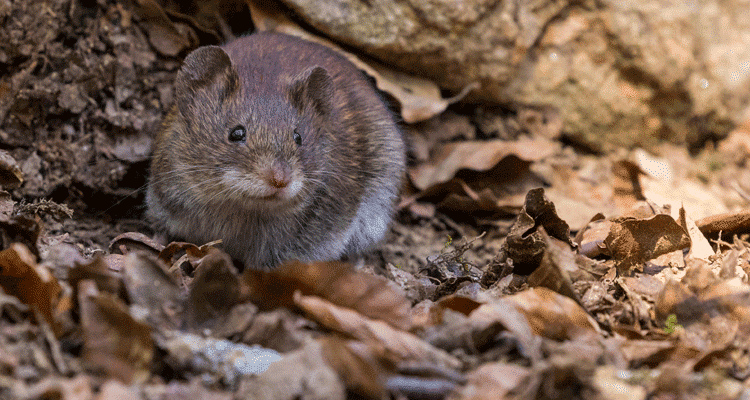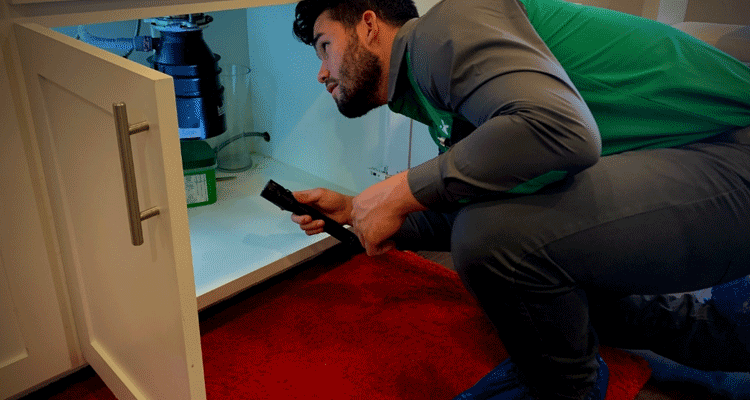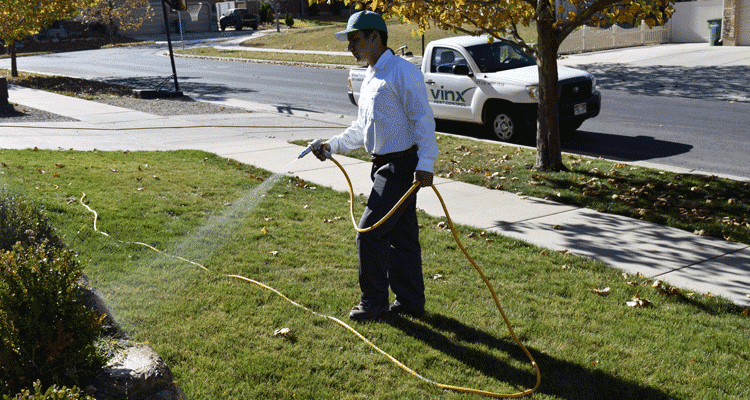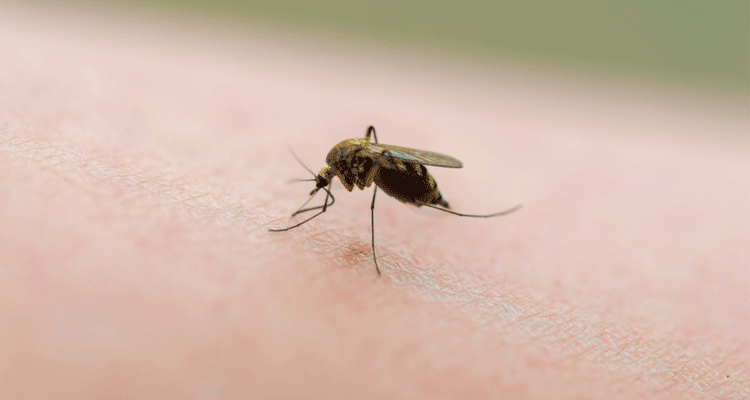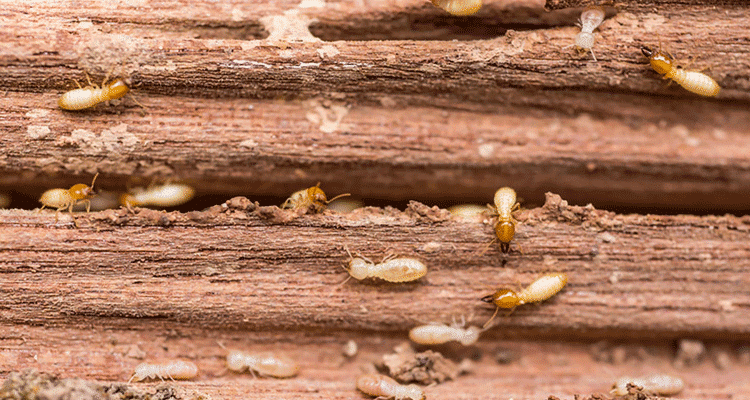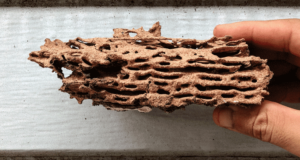We’re always being asked how to get rid of rats in the house in Dallas–Fort Worth, so we decided to put together the ultimate guide. If you decide you’d like to hire a pest control company for your rat removal needs, you can click here to get a free and accurate price quote. You can also call us at 972-855-8469. We’re open 24/7 so call us anytime. But, if you want to get rid of rats in your house yourself, here’s how to do it.
When you’re dozing off at night and about to enter dreamland, there’s nothing more paralyzing than hearing that little scratch and scurrying of feet. It can happen above you, below you, or even to the side of you. At first, it may seem like your imagination is playing tricks on you, but the more you listen, the more you hear.
You have rodents! If you’re hearing the sound at night, it’s a good chance that the rodent you’re dealing with is a rat. Unfortunately, chances are, there’s more than one in your house as well. We get it—this can seem terrifying. Rats carry lots of diseases and leave behind droppings, trash, and an unavoidable funk. The good news is, you can get rid of them. It may take a little bit of time and commitment, but these uninvited house guests don’t have to stay for an extended time period. We know exactly what you need to do to kick these rodents out!
Where do rats come from?
We’re always getting asked where rats come from. It’s a good question because they are often seen around residential areas. Well, they come from outside! Rats aren’t anything new. They’ve been around for ages (say hello to the bubonic plague) and have been causing issues since the dawn of time. There’s something about our habits that rats seem to love, and maybe it’s because we leave food out for them.
Sure, you’re not filling up Fido’s dog bowl with rat snacks, but crumbs, trash, and even the occasional bush or tree can be a full-on gourmet meal for these pesky animals. They are ready to chow down, which is why the snuggle up to humans as close as they can. Rats may be outdoor animals, but they sure love being inside. Your home is the perfect hotel for them, which is why you’re seeing rats in the first place.
What do rats eat?
Rats don’t have a very distinguished palate. As it would turn out, they will eat almost anything. Whether it be scraps, trash, rotten fruit from a fruit tree, or measly crumbs, they’ll make do. They don’t mind the taste of even the most vile food, and they just want to be near humans. We provide them some of the best cuisines in the world, which is why they are coming into your home! It’s time to stop the food service that has become your home and time to get the rats gone for good.
How to keep rats away
Obviously, the best course of action is prevention. This is pretty much true in all aspects of life. If you don’t want something coming in, prevent it! Rats are no different. These little creatures see your house and think it’s a VRBO. Can you blame them? Your house is gorgeous! Even the messiest of places is an upgrade that these little rats are not used to. So, we get asked pretty often how to keep rats away. When it comes to prevention, there are a few things you can do.
Keep your trash sealed
If you had a free all-you-can-eat buffet in front of you, at the nicest hotel in Vegas, you’d dig in, right? Well, so will rats. When they see your trash can, it’s a buffet to them. There is so much delicious food in there that you left behind, and they don’t need much of it to stay full. They can live off of your trash can for their entire life!
As you can imagine, your trash can be quite the enticer for a little rat. They aren’t going to pass up on good food, so they’ll stick around. However, rats also like to explore. This is especially true when other rats start taking stock in their food source. When the buffet gets busy, a few rats are going to walk around and see what else is available. If they could have food and a place to stay, they’ll take it. So, when they see an entrance into your home, expect them to come on in. However, prevention is the first step. Keep those trash cans sealed so they never get to your home!
Take away their homes
Most of the time, we’d never condone taking a person’s house. But with rats, sometimes you have to do this tough job. We hate to break it to you, but you have to take away their homes. Real talk, rats love your old stuff. We’re talking old cars, cut down tree limbs, bushes, debris, woodpiles, and any other place that they can hide. These little ones are like the world’s best hide-and-seek champions. If it’s a dark place to huddle in, you can count on them finding it.
It’s time to act like Marie Kondo and redo your yard. You need to tidy up! Is that old car really worth keeping? How about those cut-down tree limbs that you see every morning and say, “Oh yeah, I need to pick those up,” and never do? It’s time to do it! Get rid of anything you’re not using and throw out the old debris that your spouse has been telling you to pick up for a year now. Seriously, this is a part of prevention that you can’t skip out on.
Fill ‘em up
No, we’re not talking about the rats. Fill up the holes, cracks, and gaps on the outside of your home. Take a quarter out of your pocket. See how small it is? Guess what? A rat can fit through a hole that size! Rats practice yoga on the daily so they are super flexible. Okay fine, you won’t find them in down dog any time soon, but we weren’t kidding about their flexibility. Any hole that is the size of a quarter or larger is fair game.
You need to fill up all of these gaps with proper materials. Ensure the weather stripping on your doors and windows is ideal, check your roof for any holes or gaps, and fill in anything that you find. Even holes smaller than a quarter can be chewed or scratched at enough for them to fit through, so it’s best to repair it all now so you don’t have to worry about it later.
Trim your trees
Trim your trees and your shrubs. Think of tree limbs as a rat highway. It’s the easiest way for them to get all the way across the yard to the top of your house! How convenient (for them). It’s best to keep about four or five feet of bareness from your home. Though they can jump, they can’t jump that far. As long as you keep it trimmed, you should be good.
Trap them
One of the most popular ways to keep rats away is to set traps. You can have traps outside or inside, but either way, there are a few things you should keep in mind. Traps are great—as long as you can access them. If you are unable to get to the traps easily, this isn’t going to work. Make sure to place them in easily accessible areas so that you can remove the rat once the trap does its job.
Another thing to keep in mind is that traps can be dangerous for your pets or children. Most people go with the traditional snapping traps, but this can cause severe damage should a loved one get by it. That’s why it’s important to use safe traps if you are going a DIY route.
Poison and Bait
Another popular route is to poison and bait rats. However, most people do it wrong. They often use baits and poisons within their home, which is extremely dangerous. Not only can children and pets get into it, which could cause sickness or even death, but it also can make the rat problem worse.
Like we mentioned above, you want to keep the rats away from the home, not bring them inside! If you’re using poison and bait indoors, it can bring the rats inside as well. On top of that, to make matters worse, the rats can take this poison and then die within your walls. This creates a whole other host of problems that could have you ripping apart the drywall to get the carcass out. Save yourself some time—don’t do this! Only use baits and poisons outdoors. Remember to put it in a place that curious pets and kids can’t get into it.
Blame your neighbors
If you have problems with rats, blame your neighbors. Okay, not really, but rats are usually a neighborhood problem. If you have rats, your neighborhood probably has a rat problem. It may be smart to get together with your neighbors and see if they are experiencing any of the same issues. If they are, there may be a neighborhood-wide problem with trash or debris that needs to be solved.
In any case, it’s smart to band together with neighbors and share treatment ideas. You never know what they are doing to keep the rats under control!
Call a rodent control company
Let’s face it, you’re not a rodent expert. It’s probably smart to leave the rats to the experts. Pest control companies have special treatment strategies to get rid of rodents for good. If you’re in the Dallas/Fort Worth area, Vinx Pest Control can help. Like other professionals, our treatment methods are sure to work. They aren’t available to the public, so our traps, baits, and poisons really get the job done.
The nice thing about Vinx is that our service comes with a guarantee. We’re the experts at getting rid of rodents and can do it very quickly, but it’s even better than that. If for whatever reason the rats aren’t gone after the first go around, we’ll come back for free and guarantee our work. We come and check the traps, reset them, and make sure that your rats are no longer bumming in your home.
How to get rid of rats in the walls
It’s really frustrating to think that you have the rats under control and then you hear them scurrying in the walls. While prevention is the most important part of keeping rats away, things do happen. Sometimes, rats will get inside and cause issues. If you think you have rats inside your walls, there are a few things that can confirm it:
- Scurrying or scratching noises late at night
- Disturbed insulation
- Droppings or a foul smell
If you’re experiencing these three things, there’s a good chance that the rats are indeed in your walls. This can be frustrating because before you can trap them, you have to get them out of the walls. Rats are probably entering through a hole somewhere outside, and it’s also possible that they are coming in through the roof and into your attic.
It’s important to note that you should never use poison while trying to get rid of rats in the walls. This is because if they ingest the poison, they may not make it out in time before they die. Rats that die in your walls are huge problems. Give it a few days and there will be an unmistakable smell that you cannot get rid of. This is the decaying carcass, and if left alone, the smell will only get worse.
There are many people who have experienced this by improperly baiting and poisoning rats. It’s much easier to leave the rats up to the professional so this doesn’t happen to you! It can be a very costly mistake because you will have to cut into the drywall to get the rat out.
How to set a rat trap
If you are going to try and trap the rats yourself, there are a few different traps to choose from. The most popular are the snap traps, which you bait and wait for the rat to eat from. This will cause a lethal snap that kills the rat once they start eating the bait. While this is effective, it is also dangerous for yourself, children, and pets. When working with these traps, always follow the instructions included with the trap. You should never use your fingers while working with these traps as it can cause serious injury.
It’s also a good idea to put a box with a small opening on top of the snap trap. This can be an added layer of protection to keep kids and pets away, but don’t count on that being the only thing that keeps them out. It’s a good idea to use snap traps in areas that children and pets won’t be in—like the attic.
There are also traps that are cage traps. While cage traps can be just as effective as a snap trap, it isn’t lethal. That means once you capture the rat, you have to find a place to dispose of it. This can be a bit more tricky if you don’t have somewhere to take the live rat. However, this is a much safer approach if you have children or pets because it won’t cause any injury should they accidentally get into the trap.
Each rat trap is a little bit different, so you should always follow the instructions for setting it up or contact a professional for help.
How to get rid of rats in your attic
Even though your attic may be a mess, it holds some of the most important things to you. I mean, where else could you store your life-sized Santa and five boxes of high school memorabilia? So, it’s a no brainer that you would want to protect your assets and keep rats away.
While we’re big into prevention, rats happen. If you’re hearing that squeak-squeak above you at night, rats may be making your letterman jacket their newest home. Let’s get them out of there! We get asked how to get rid of rats fast, and when they’re in your attic, this is important. They can damage your insulation, have a ton of babies, and then urinate and defecate all over the place. Sound like the worst roommates? That’s because they are!
When you’re dealing with attic rats, you want to focus on trapping. Remember, you never want to poison inside the home because these rats could end up dying in a place you never see or find. The smell will be the only thing that tells you they are there! So, traps are a great option for attics. Since there won’t be kids or pets in the attic, we recommend going with the classic snap traps. You can use peanut butter, something sweet, or even a small piece of cheese if you want to go good old-fashioned. Either way, traps can be a huge help in cutting down on the number of rats in your home.
How to get rid of rats fast
So, you want to get rid of rats fast? We’re the people to call. Here’s the thing: getting rid of rats yourself takes time. You can buy the traps, poison, and bait, but unless you do it for a living, you’re not going to do the best job. It can be hard to educate yourself on what rats love, how to get them out, and what you need to do to ensure they don’t come back. It’s time-consuming, and it’s time that you could be out doing something that would benefit you much more.
Leave the rats to the experts. We know how to get rid of rats fast because this is our job! Rodents are annoying, and we want to make sure that they get out of your home as quickly as possible. If you’re in the Dallas area, give us a call for a free quote.
Conclusion: How to get rid of rats in the house
If you want to get rid of rats, here’s what to do:
- Prevention is key
- Fill up all holes and gaps around the house
- Get rid of trees and shrubs four to five feet from the home
- Keep trash securely closed and clean up fruit trees
- Set up poison and bait outdoors
- Trap rats indoors
- Talk to your neighbors
- Call us to come and help!
Getting rid of rats alone can be a hard challenge, which is why we’re available to help. Rodents shouldn’t be bugging you. Vinx offers same week appointments and will make you a priority. If you’re in the Dallas-Fort Worth area, call us today or fill out the form below. We’re located in Carrollton, TX, and serve the entire Dallas area including Flower Mound, Richardson, Little Elm, and more.
We’ll talk to you about what you’re experiencing and get you a free quote in just a few minutes! You can also call us at 972-855-8469 for immediate help or fill out the form below.



